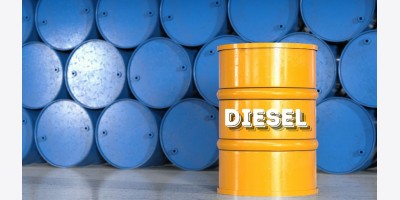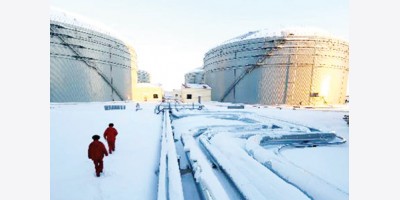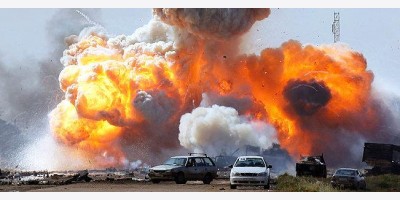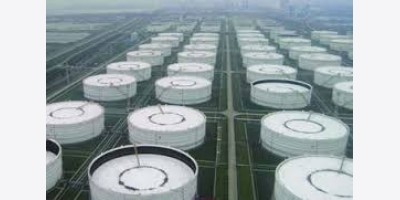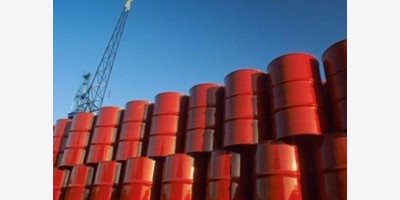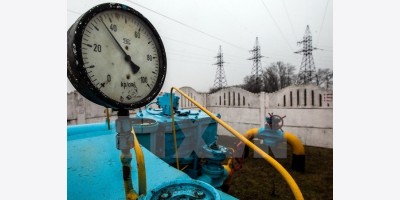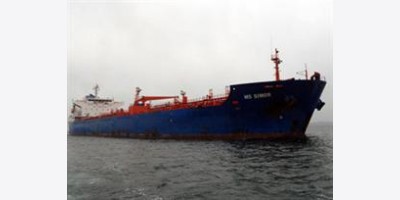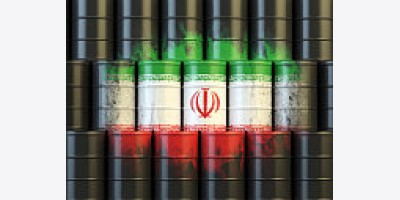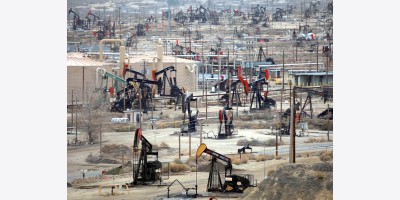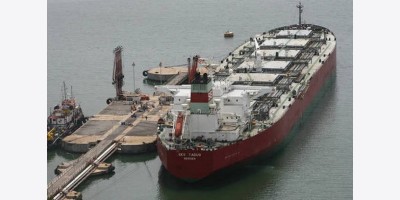By Harrison Jacobs
February 16. 2014 4:30PM
Politicians and activists may love to talk about renewable energy sources, but in today’s world fossil fuels are still king. Indeed, as technology has developed in recent years, previously unreachable oil and gas reserves, like shale gas, have become huge sources of industry.
Using data from British Petroleum’s 2013 statistical review of world energy, we calculated the countries with the largest reserves in three key fossil fuel categories—oil, coal, and natural gas.
We then calculated the total value of the reserves by using current global prices. For oil, we used the current Brent Crude Oil price on Bloomberg Markets. For natural gas, we averaged BP’s 2013 prices for Japan, United States and Germany to accommodate for the diverse world market. For coal, we used the World Bank’s 2013 trading price for Australian coal, which is commonly used as a benchmark for global markets.
While the data is imprecise, our ranking reveals which countries control the most energy. As developing economies like China and India expand and fossil fuel supplies dwindle, those reserves will be more important than ever.

12.2 billion barrels of proven oil reserves (#17)
159.1 trillion cubic feet of proven natural gas reserves (#10)
$3.4 trillion value at current prices
Algeria is Africa’s largest natural gas producer and second largest oil producer. Crude oil production has stagnated in recent years and natural gas production has declined. In response, the Algerian parliament has introduced fiscal incentives to lure foreign companies to new ventures, specifically in offshore exploration and shale gas. Foreign investment has been slow, in large part due to security concerns. The attack on the In Amenas gas facility in January 2013 raised those fears again, causing Algeria to increase its security presence at all facilities.

48 billion barrels of proven oil reserves (#9)
54.6 trillion cubic feet of proven natural gas reserves (#19)
$6 trillion value at current prices
Libya holds the largest proven crude oil reserves and the fourth largest proven natural gas reserves in Africa. The civil war in 2011 severely impacted oil production and exports, causing the economy to collapse. It has since begun to recover, though the energy sector has still been plagued by protests, strikes, and civil unrest, which interrupt production. Oil and natural gas account for nearly 96% of the total government revenue.

5.7 billion barrels of proven oil reserves (#22)
47 trillion cubic feet of proven natural gas reserves (#20)
60,600 million tons of proven coal reserves (#5)
$6.5 trillion value at current prices
India is the fourth largest energy consumer in the world, trailing the United States, China, and Russia. Currently, India is not able to consistently meet domestic energy demands, which makes securing energy sources one of India's top priorities. India's petroleum minister recently announced an action plan to make India energy independent by 2030, through increased hydrocarbon production, coalbed methane, and shale gas. Currently, India's largest energy source is coal.

30 billion barrels of proven oil reserves (#12)
45.7 trillion cubic feet of proven natural gas reserves (#22)
33,600 million tons of proven coal reserves (#8)
$6.8 trillion value at current prices
Kazakhstan produces approximately 1.64 million barrels of oil per day. Production has continued to grow in recent years thanks to the development of its massive Tengiz, Karachaganak, and Kashagan fields. Since Kazakhstan's independence in 1991, there has been an influx of foreign investment, which has helped develop the fields. Kazakhstan is currently in the process of upgrading its pipelines to accommodate more export routes from the Kashagan oil field, especially to China.

37.2 billion barrels of proven oil reserves (#10)
182 trillion cubic feet of proven natural gas reserves (#9)
$6.8 trillion value at current prices
Nigeria is the largest oil producer in Africa and the world’s fourth largest exporter of liquefied natural gas. It also has the largest natural gas reserves in Africa, but production has been limited by instability. There are daily supply disruptions that often result in outages as large as 500,000 barrels per day. Oil theft, aging infrastructure, and poor maintenance are also large issues in the Nigerian energy sector. International companies such as Shell, ExxonMobil, and Chevron all have large stakes in the Nigerian energy sector and are leading major development projects in coming years.

3.9 billion barrels of proven oil reserves (#25)
132.8 trillion cubic feet of proven natural gas reserves (#11)
76,400 million tons of proven coal reserves (#4)
$9 trillion value at current prices
Australia is rich in lucrative commodities, such as fossil fuels and uranium. It is a net hydrocarbon exporter, exporting over 70 percent of its total energy production. Australia’s political stability, transparency, and proximity to Asia makes it highly attractive to foreign companies. Foreign investment would help develop energy infrastructure and create more efficient energy production.

0.6 billion barrels of proven oil reserves (#28)
618.1 trillion cubic feet of proven natural gas reserves (#4)
$9.7 trillion value at current prices
Despite Turkmenistan’s large natural gas reserves, it’s development has been limited due to insufficient pipeline infrastructure. The country has tried to mitigate that issue by creating a more business-friendly environment that allows foreign companies to take on joint-ventures with the state-run oil and natural gas companies.

101.5 billion barrels of proven oil reserves (#6)
63 trillion cubic feet of proven natural gas reserves (#18)
$11.8 trillion value at current prices
Despite having the second smallest land area among OPEC countries, Kuwait exports the third largest volume of oil, making it the world’s tenth largest oil producer. Kuwait’s economy is dependent on petroleum exports, which make up almost half of its gross domestic product. The entire oil sector is owned by the government of Kuwait, under a constitutional ban of foreign ownership of its resources. Kuwait has recently begun to develop natural gas fields in order to diversify its economy.

17.3 billion barrels of proven oil reserves (#14)
109.3 trillion cubic feet of proven natural gas reserves (#13)
11,4500 million tons of proven coal reserves (#3)
$13.2 trillion value at current prices
As the most populous country in the world and a rapidly developing economy, China is the largest energy consumer and producer in the world. The sheer size of its market has made China extremely influential in the world energy trade. Natural gas production is increasing in the country, but coal remains China’s primary energy source. China currently accounts for nearly half of the world’s coal consumption.

97.8 billion barrels of proven oil reserves (#7)
215.1 trillion cubic feet of proven natural gas reserves (#7)
$13.8 trillion value at current prices
The United Arab Emirates currently produces an average of 2.8 million barrels of crude oil per day, the eight highest in the world. The UAE is also a top-20 global natural gas producer. Several ongoing projects could boost natural gas production, but with growing domestic demand for gas, that may not necessarily translate to more export revenue. The UAE is making progress at diversifying its economy in tourism and manufacturing, but the energy sector should dominate the economy for the near future.

23.9 billion barrels of proven oil reserves (#13)
885.1 trillion cubic feet of proven natural gas reserves (#3)
$16.4 trillion value at current prices
Qatar has been thriving in recent years thanks to its robust energy sector. As the largest exporter of liquefied natural gas and the fourth largest supplier of dry natural gas, Qatar earned $55 billion from oil exports in 2012 or approximately 60% of the government’s total revenues. The development of new gas fields and other projects could increase Qatar’s production even more in the near future.

150 billion barrels of proven oil reserves (#5)
126.7 trillion cubic feet of proven natural gas reserves (#12)
$18 trillion value at current prices
In 2012, Iraq passed Iran as the second largest producer of crude oil in OPEC, despite only a fraction of Iraq’s known oil fields being in development. The continuation of that trend is contingent on the stabilization of the country, which will make it more attractive to foreign investment. Foreign companies could provide much needed infrastructure improvements and developments.

173.9 billion barrels of proven oil reserves (#3)
70 trillion cubic feet of proven natural gas reserves (#17)
6,582 million tons of proven coal reserves (#11)
$20.2 trillion value at current prices
Canada is one of the world’s five largest energy producers. With large oil and natural gas reserves and close proximity, Canada is the United States’ primary supplier of energy imports. The development of the Bakken and Athabasca oil sands has spurred unexpected growth in the world fuel supply, making Canada a key player in the energy sector going forward. Canada could become even more crucial to U.S. Energy policy, contingent on the approval of the controversial Keystone XL pipeline.

35 billion barrels of proven oil reserves (#11)
300 trillion cubic feet of proven natural gas reserves (#5)
237,295 million tons of proven coal reserves (#1)
$28.5 trillion value at current prices
The United States is the second largest consumer of energy in the world, accounting for 25% of the world's petroleum consumption, while producing only 6% of the world's annual petroleum supply. America's dependence on foreign energy could change in the near future due to the shale gas revolution and hydraulic fracturing, which has made economically unfeasible reserves suddenly open to development.

265.9 billion barrels of proven oil reserves (#2)
290.8 trillion cubic feet of proven natural gas reserve(#6)
$33 trillion value at current prices
Saudi Arabia has nearly one fifth of the world’s proven oil reserves, in addition to being the largest producer and exporter of petroleum. Its largest oil field, the giant Ghawar field, has more proven oil reserves than all but seven countries. Saudi Arabia also has a massive natural gas reserve, which remains relatively undeveloped. The country has instead focused on oil and, increasingly, solar energy to supply its electricity demand.

297.6 billion barrels of proven oil reserves (#1)
196.4 trillion cubic feet of proven natural gas reserves (#8)
479 million tons of proven coal reserves (#15)
$34.9 trillion value at current prices
Venezuela may be plagued by electricity blackouts, a lack of investment, and a state oil company that is running at a massive loss, but it does have vast energy reserves. Venezuela is currently the 8th largest net exporter of oil and has the largest number of proven oil reserves in the world. The Orinoco Belt, oil sands similar to those found in Canada, constitute a large portion of Venezuela's reserves. It is estimated that Orinoco could yield between 380–652 billion barrels, according to the US Geological Survey. However, the Orinoco oil requires more complex methods to extract than more conventional oil sources. In order to put those vast reserves to use, Venezuela will have to solve its investment and inflation issues, which have crippled oil production.

157 billion barrels of proven oil reserves (#4)
1,187.3 trillion cubic feet of proven natural gas reserves (#1)
$35.3 trillion value at current prices
With headlines dominated by US-EU-Iran nuclear talks and ongoing sanctions, it is easy to forget that Iran has the largest natural gas reserve in the world and the fourth largest oil reserves. Sanctions have had a deleterious effect on the energy sector, preventing foreign investment and technology from flooding in to develop Iran's primarily undeveloped natural gas reserves. One unforeseen boon of the sanctions is the expansion of Iran's domestic refineries, which have grown to meet demand in the country. Should Iran comply with the pending nuclear deal and sanctions are lifted, foreign investment could rush in to develop Iran's massive resources.

87 billion barrels of proven oil reserves (#8)
1,163 trillion cubic feet of proven natural gas reserves (#2)
157 million tons of proven coal reserves (#2)
$40.7 trillion value at current prices
Russia is currently the second-largest producer of dry natural gas and trails only the United States and Saudi Arabia in oil production. Russia’s economic growth is largely driven by energy exports, with oil and gas revenues accounting for 52% of its federal budget revenue. Russia’s energy dominance should continue in coming years. Natural gas is only becoming more important as an energy source and Russia holds the second largest natural gas reserves in the world.




